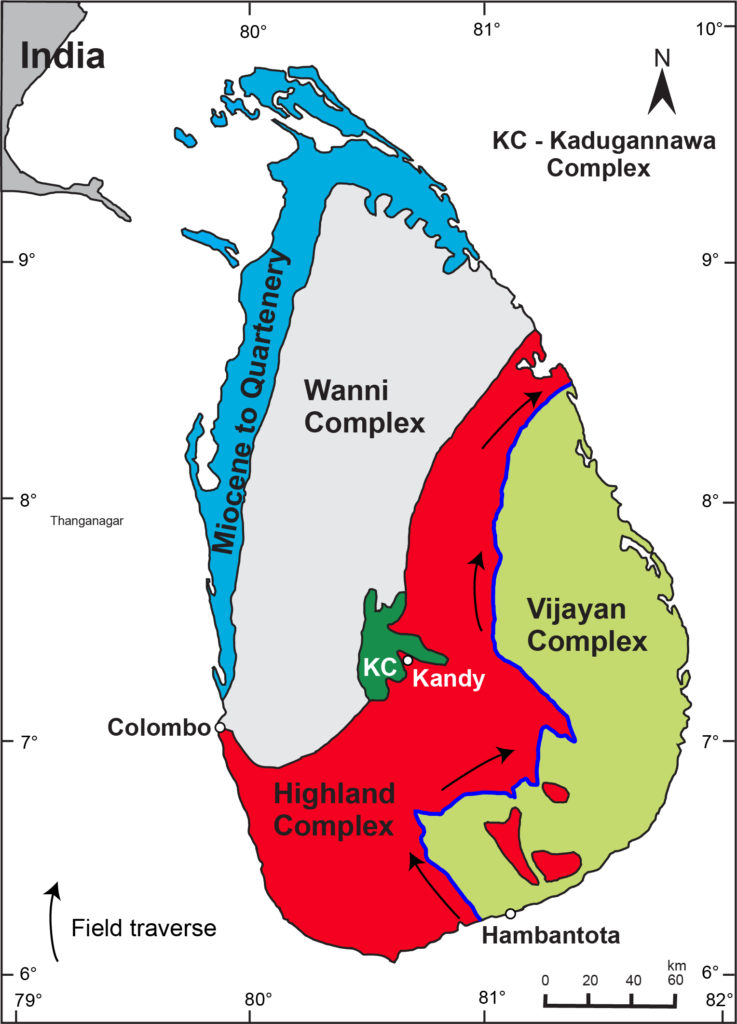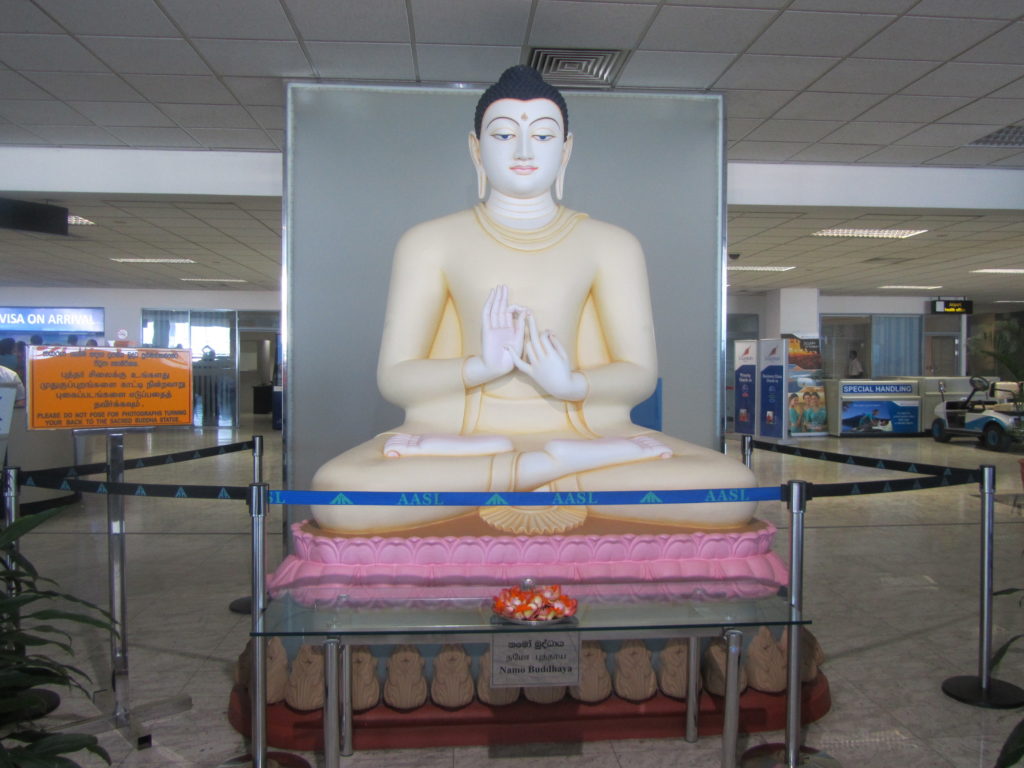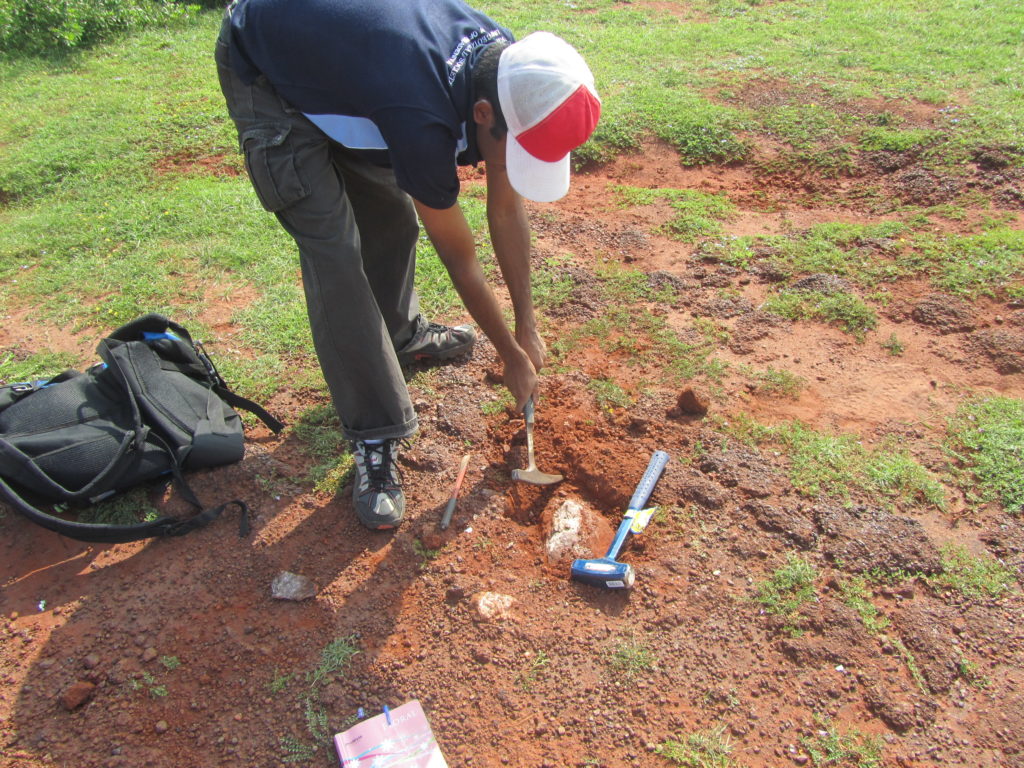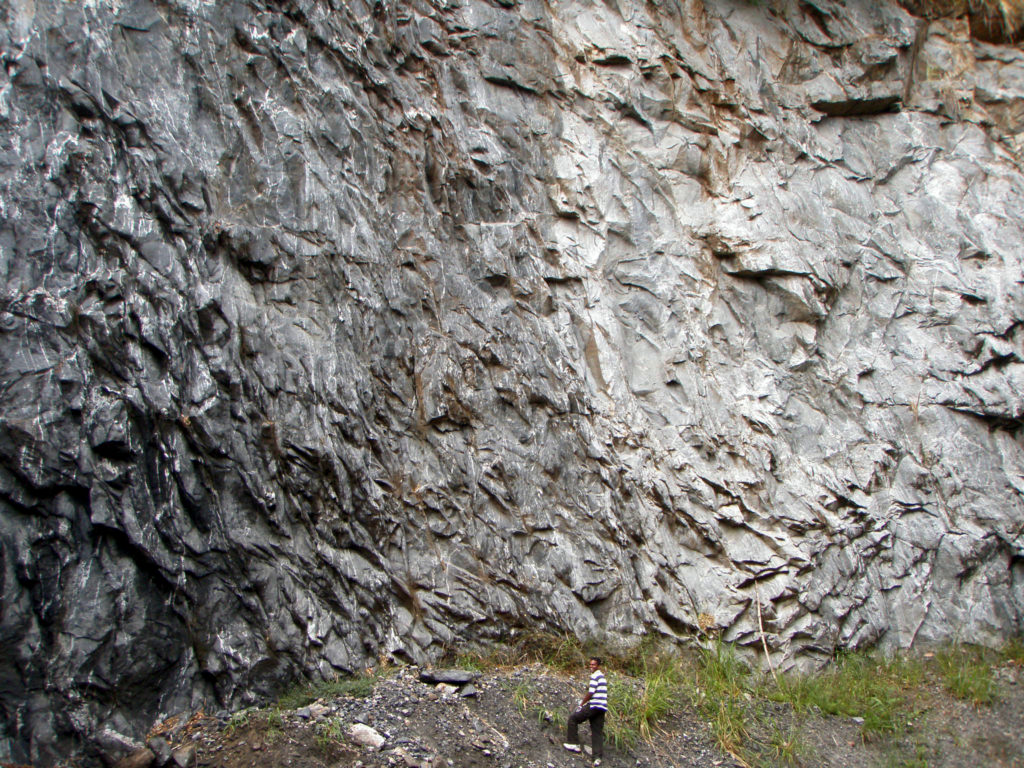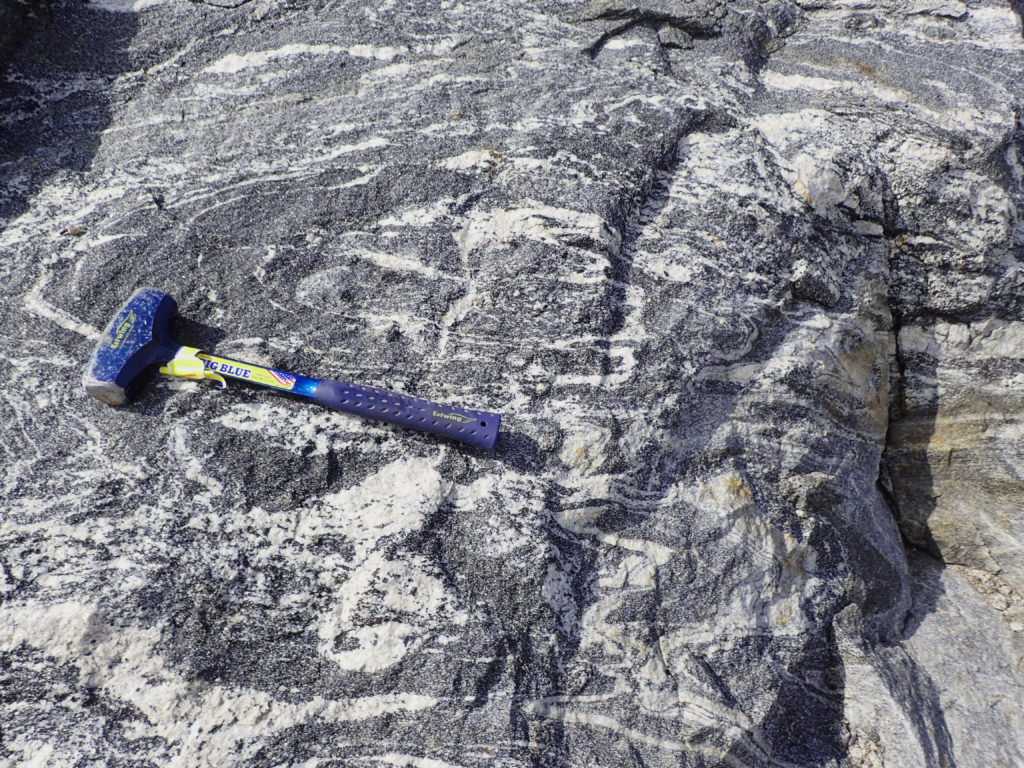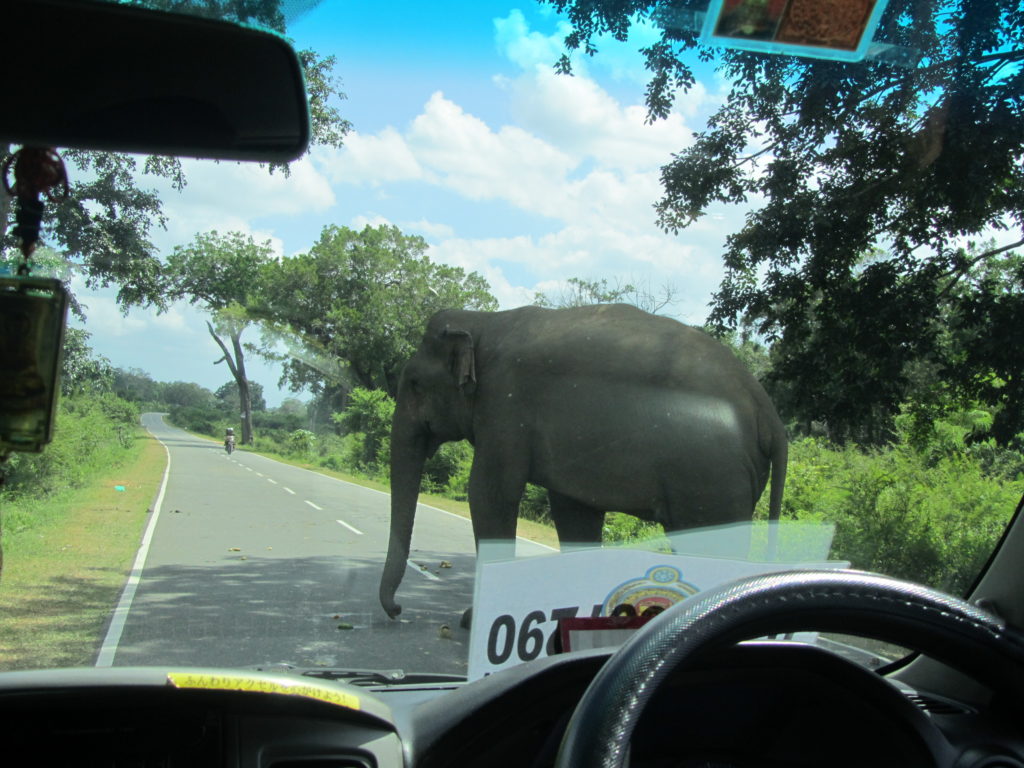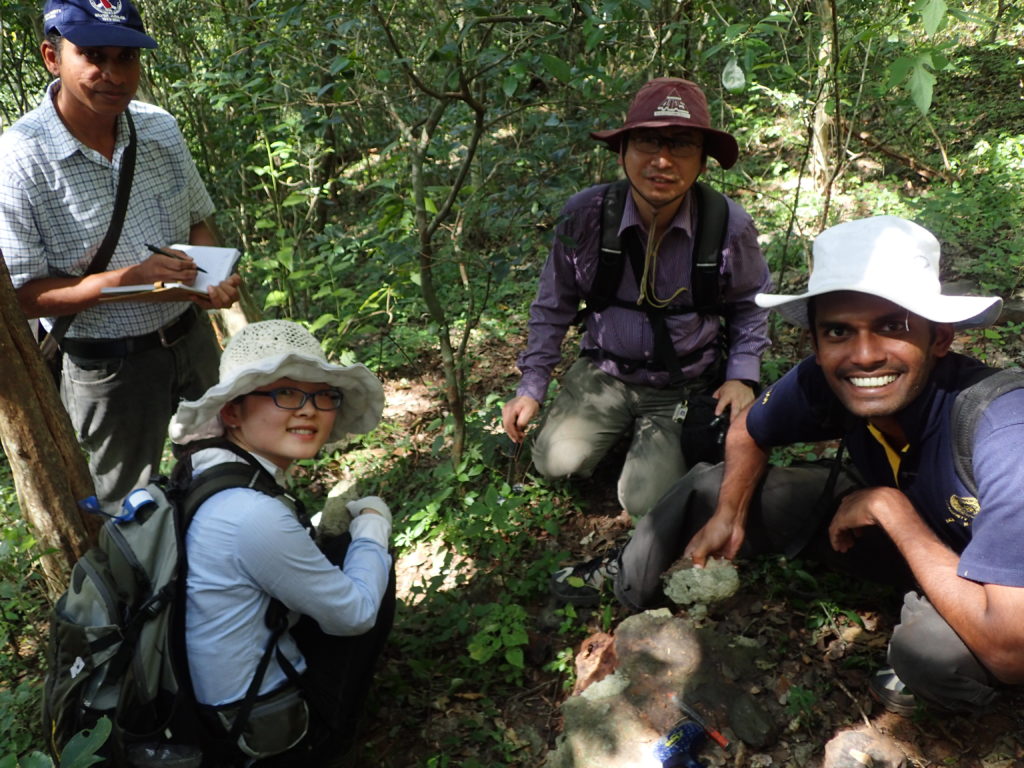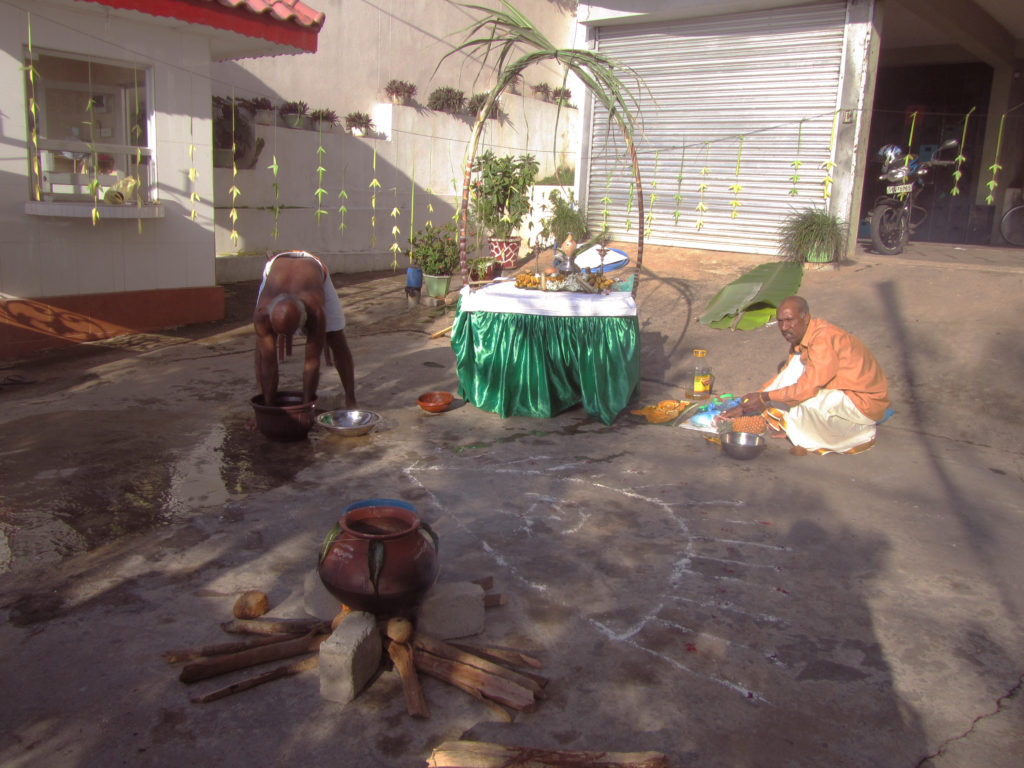Xiaofang He is a Ph.D. student at China University of Geoscience Beijing, also doing joint Ph.D. study at the University of Adelaide. Her project is using a series of methods to invesitgate the Neoproterozoic crustal evolution of Sri Lanka associated with the amalgamation of Gondwana. Read more about Xiaofang’s research here. You can also find Chinese version from here.
As lucky as many geologists, I am privileged to explore some of the most extraordinary places in the world, as our “outdoor office”. In 2015, with the start of my PhD, I got a valuable opportunity to visit Sri Lanka—one of the tourist attraction well-known for its gemstone, black tea, and tropical scenery. Unlike most tourists, however, I came for a different reason.
Sri Lanka, historically called Ceylon, is an island country located in the southeast corner of the Indian Ocean. Because of its isolated location and geographical shape, it is often described “the teardrop of India”. However, in late Neoproterozoic–early Cambrian (about 600–500 million years ago), Sri Lanka was not isolated at all. It was in the heart of the biggest continent in the southern hemisphere—supercontinent Gondwana, wedged among Peninsular India, Madagascar, and East Antarctica. Although only a small crustal fragment designated as the ‘pendant of Gondwana’, the rock records in Sri Lanka provide important windows to understand the Neoproterozoic–Cambrian tectonic events and crustal evolution history associated with supercontinent amalgamation. For these reasons, I was attracted to start my PhD in this area.

Paleogeographic reconstruction map of Supercontinent Gondwana in Late Neoproterozoic (from de Wit & Anderson, 2004)
Except for a narrow band of Meso-Cenozoic sedimentary succession in the northwest coast, rocks in Sri Lanka are mostly composed of highly-metamorphosed Precambrian igneous or sedimentary rocks. They are composed of three major tectonic units: the Wanni Complex to the west, the Highland Complex in the middle, and the Vijayan Complex to the east divided by two tectonic boundaries which also are recognized as “eastern and western suture” of Sri Lanka. The Highland Complex forms a section of Mozambique Belt, representing an older continental crust which was strongly deformed and metamorphosed in the Neoproterozoic/Cambrian associated with the closure of Mozambique Ocean—the ocean that separated west and east Gondwana. Whereas the Wanni and Vijayan Complexes are juvenile magmatic arcs that are dominated by Neoproterozoic volcano-sedimentary rocks and plutons, their formation marks the birth of Gondwana.
My PhD is to systematically investigate the Neoproterozoic crustal evolution of Sri Lanka, for which my first task is to understand the nature of the ‘eastern suture’ (Vijayan–Highland boundary) with detailed field studies and sampling along a N–S traverse, and utilize an array of methods including U–Pb geochronology, geochemistry, and isotopic systematics, as well as pressure–temperature (P–T) modelling to constrain its tectonic setting and evolution.
In January 2015, my supervisor Prof. M. Santosh from India, the leader and funder of this trip—Professor Toshiaki Tsunogae from Japan and myself from China, flew separately to Sri Lanka’s capital city Colombo, and transferred to a southern coastal city—Hambantota to meet our Sri Lankan collaborators and local guides, Dr. Sanjeewa and his PhD student Dharma from University of Peradeniya.
The moment we entered the Colombo airport, we were immersed in the strong Buddhist culture, from the giant statue of Buddha to the monks everywhere. Without a stop in the city, we drove directly to Ussangoda, the southernmost location of the ‘eastern suture’, also the starting point of our field trip. In between, we stopped at a small restaurant for lunch and I had my first experience of eating with hand. I was so hungry that I even forgot to wash my hands.
Although most things are cheap in Sri Lanka, hotels are not due to the tourism. So we started our field trip from the next day, the first stop is serpentinite. This serpentinite belt spread along Highland and Vijayan tectonic boundary for about 10 km, mainly formed by hydration (low-temperature metamorphism) of ultramafic rocks like peridotite. Even with a large area of serpentinization, there are not many fresh rock outcrops as most have undergone extensive weathering and now covered by extremely iron and nickel rich lateritic soil. In spite of this, we managed to find several fresh outcrops near the bush and found some unexpected magnesite occurrence with serpentinite. This evidence indicates those serpentinite and magnesite are possibly produced in a subduction zone by CO2 and aqueous fluid-induced mantle metasomatism.
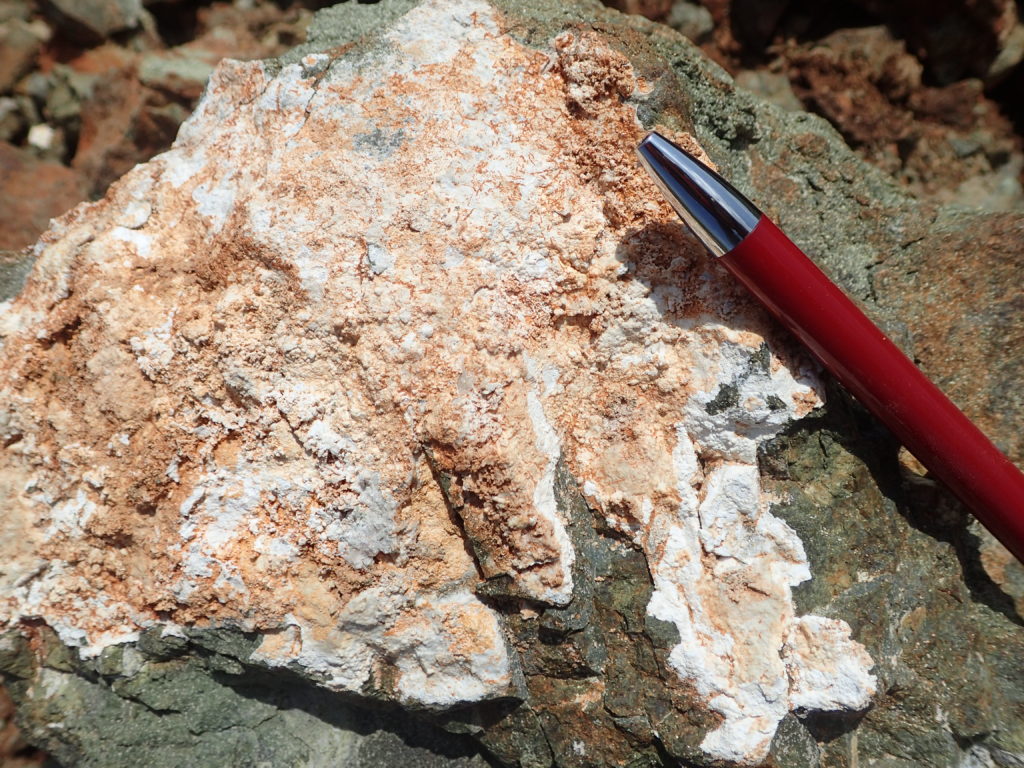
Serpentinite (originally peridotite) occurring with magnesite (magnesium carbonate) along Highland-Vijayan Complex boundary, indicate possible CO2-H2O induced mantle metasomatism
The vastly different nature of Highland Complex and Vijayan Complex are also indicated by its very different landforms. As its name suggests, Highland Complex is mostly surrounded by hills and mountains. Vijayan Complex, however, is a boundless plain. On our way from south to north, people sitting on both sides of the four-drive must have had very different scenic overlook.
Not only the spectacular geology, we were also accompanied by delicious Ceylon tea, countless types of tropical fruit and wild animals. The elephant and peacock are my favorite. On our way through Yala national park, our guide Dr. Sanjeewa bought a few bunches of bananas at the entrance, while I was still wondering why we needed so many bananas for snacks, two elephants appeared and blocked our way. Then I was told that those two elephants are very famous in this park, they only give way to people if they get food. How clever they are! No wonder they are celebrities in the elephant world.
With the fieldwork continuing, our team had moved from southern to northern Sri Lanka, which is the minor race Tamil people’s living area (the major race is Sinhalese in the south). Apart from the different food and language, northern Sri Lanka is thinly populated with a lot more poverty. The only reason I can think o is the world-known terrorist organization LTTE (Liberation Tigers of Tamil Eelam) which was based in this area and had a 25 year-long civil war, only got eventually defeated a few years ago, with the financial and strategic help of China. It was quiet and peaceful when I arrived there, but many bullet holes on the abandoned houses tell us the dark time people had gone through.
At the northern end of the eastern suture, near Trincomalee area, we sampled more mafic rocks including metagabbro and amphibolite. Most interestingly, we also found a small scale Kiruna-type magnetite–apatite deposit within an ultramafic intrusion (pyroxenite). It’s widely believed that Kiruna-type deposits are formed in extensional settings and have not been reported in an arc setting. Therefore, it’s crucial to know the age and genesis of this association to draw a more complete picture for Neoproterozoic–Cambrian Sri Lanka.
Our last day in the field happened to be the Pongal festival, Tamil people’s harvest and thanksgiving Day. In the Tamil language “Pongal” means “overflowing”, signifying abundance and prosperity. It is one of their most important festival in a year. We woke up with music and prayer in the morning, every family (even our hotel) decorated their house with banana and mango leaves, boiled their first rice of the season consecrated to the Sun God to convey their appreciation.
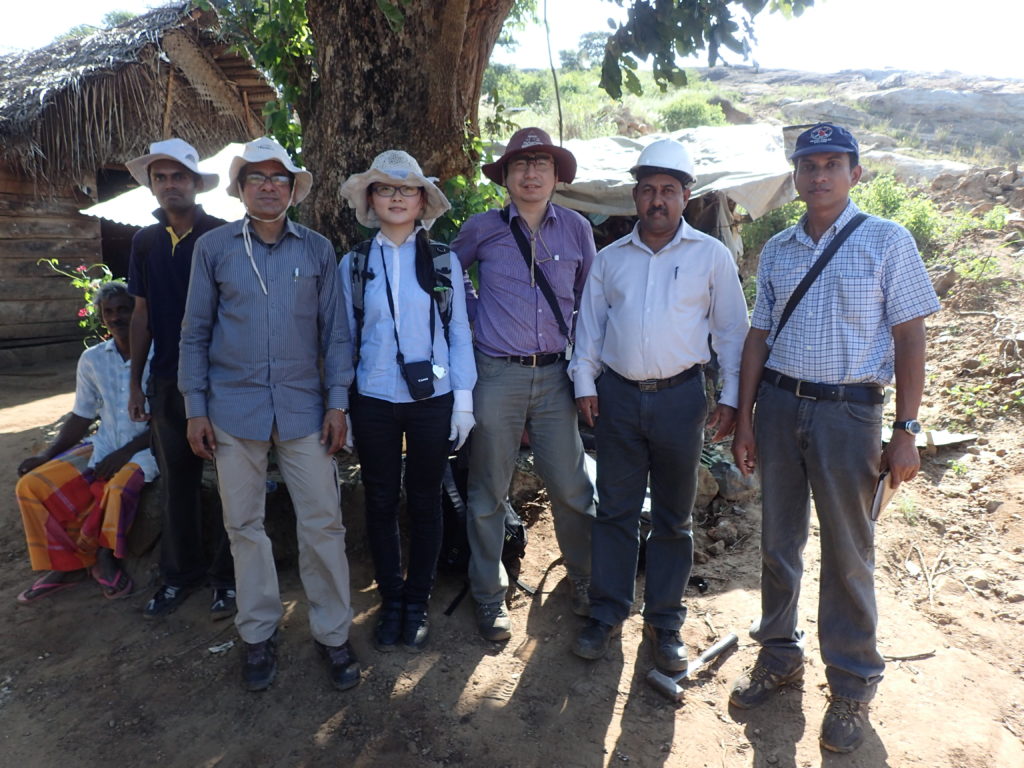
Our field team in Sri Lanka (from left to right: our local guide to the forest, Dr. Dharma, Prof. Santosh, me, Prof. Tsunogae, a mine officer and Dr. Sajeewa)
Our two-week field trip was concluded in the joy of festival. The return trip, however, was not so joyful. The president of Sri Lanka was forced to step down by a sudden coup. The Hambantota airport, where we were supposed to depart from, had to shut down because it was built during his government and named after the president. We were only informed about the cancellation after arriving at the airport. It was even worse that we didn’t know if the customs were also closed. Luckily, after five ours non-stop driving, we finally arrived Colombo airport and caught our flights.
When I wrote this article, I have finished part of the work about Neoproterozoic arc magmatism for samples I collected in this trip. I’m now using my chance of one year joint PhD study with Prof. Martin Hand and Dr. David Kelsey in the University of Adelaide, to piece the puzzle of supercontinent Gondwana from a metamorphic aspect.
![]() This work is licensed under a Creative Commons Attribution-NonCommercial-ShareAlike 4.0 International License.
This work is licensed under a Creative Commons Attribution-NonCommercial-ShareAlike 4.0 International License.

